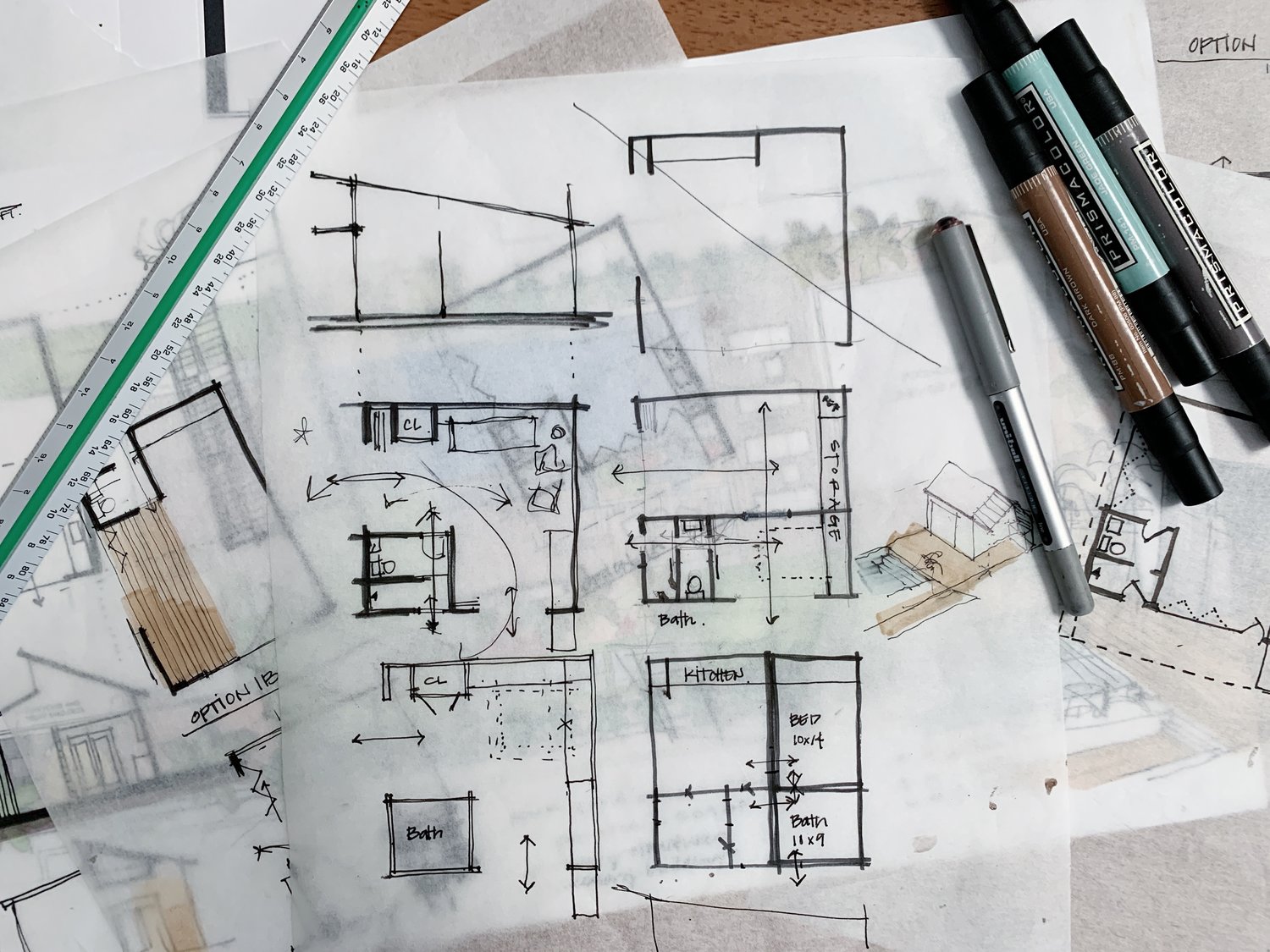Architect Workflow Optimization for More Efficient Project Delivery
Architect Workflow Optimization for More Efficient Project Delivery
Blog Article
Recognizing the Diverse Job Paths Available for Aspiring Architect
As a hopeful Architect, you have a world of job courses waiting on you. Each course provides one-of-a-kind difficulties and possibilities to apply your creativity and technological knowledge. Whether you're drawn to traditional style or the subtleties of sustainable design, there's a particular niche that straightens with your rate of interests. Understanding these varied alternatives can shape your expert trip, but which instructions will you pick to explore initially?
Conventional Design: Creating Frameworks and structures
Typical design concentrates on developing structures and frameworks that mix performance with aesthetic allure. As you explore this area, you'll value the elaborate balance in between form and purpose. You'll learn to draw motivation from historical styles, integrating components like symmetry, products, and craftsmanship. Your designs can show cultural heritage, showcasing neighborhood customs while fulfilling modern requirements.
You'll develop skills in drafting, model-making, and website evaluation, enabling you to picture and connect your concepts effectively. Involving with customers, you'll need to recognize their vision and translate it into feasible designs.
Furthermore, developing codes and sustainability techniques are crucial in your job, ensuring your frameworks are risk-free and eco-friendly. As you expand in your occupation, you'll locate opportunities in residential, industrial, or even reconstruction jobs, each offering special challenges. Embracing standard design leads the way for a satisfying occupation that admires the past while forming the future.
Urban Preparation: Shaping Neighborhoods and Public Spaces
As an ambitious Architect, you can play a vital role as a metropolitan planner, transforming how communities connect and function. By utilizing community engagement techniques, you'll ensure that locals have a voice in shaping their setting. Plus, integrating lasting style concepts will help create rooms that not only fulfill today's needs but also shield the future.
Role of Urban Planners
While many could consider architects as the single visionaries behind buildings, urban planners play a vital function fit the wider landscape of areas and public rooms. They assess land usage, zoning laws, and neighborhood needs to produce lasting settings that boost quality of life. By working together with numerous stakeholders, you'll assist develop parks, transport systems, and suburbs that promote social interaction and accessibility. Urban planners likewise concentrate on ecological factors to consider, making certain that developments integrate green rooms and support biodiversity. Your expertise in spatial style and neighborhood dynamics allows you to imagine future growth while maintaining cultural heritage. In this essential role, you'll directly affect exactly how people experience their environments, making every job a chance for positive change.
Area Involvement Techniques
Reliable neighborhood interaction strategies are essential for urban organizers to assure that the voices of residents are listened to and valued in the planning procedure. To promote meaningful discussion, you ought to prioritize open discussion forums and workshops where community members can share their ideas and problems. Use studies and social media sites to reach a wider target market, guaranteeing varied viewpoints are included. Collaborating with local organizations can enhance trust fund and help with deeper connections. It is necessary to provide clear information about suggested tasks and decision-making procedures, permitting residents to really feel enlightened and encouraged. By proactively integrating and paying attention comments, you'll develop areas that show the area's requirements, eventually resulting in more sustainable and effective city settings. Welcome openness and continual discussion for long lasting influence.
Lasting Layout Principles
When designing metropolitan rooms, integrating lasting layout principles is vital for developing atmospheres that prosper both environmentally and socially. Take into consideration incorporating green rooms, like yards and parks, to improve biodiversity and improve air top quality.
Designing with water preservation in mind is likewise vital-- consider rainfall yards and permeable surface areas to handle stormwater. Including community members during the preparation procedure assurances that the rooms you produce fulfill their demands and motivate social communication. By accepting these concepts, you'll add to dynamic, sustainable urban landscapes that profit every person.

Landscape Design: Producing Sustainable Outside Settings
As you check out landscape design, you'll find essential layout concepts that produce practical and stunning outdoor rooms. Sustainable methods play an important role in guaranteeing these settings prosper while reducing environmental effect. And also, you'll discover a selection of career opportunities that permit you to make a genuine distinction in just how people communicate with nature.
Design Concepts in Landscape
Understanding layout principles in landscape design is important for producing lasting outdoor environments that integrate with nature. You'll require to consider elements like range, balance, and proportion to guarantee your layouts feel natural and welcoming. Including native plants not just enhances biodiversity yet additionally lowers water use, making your landscape durable. Assume about the flow of room and exactly how people engage with it; paths and seating areas must invite exploration and leisure. In addition, pay attention to seasonal changes, making with materials that match the surroundings year-round (Architect). By focusing on sustainability and aesthetics, you can produce outside spaces that improve the neighborhood and promote wellness. Welcoming these principles will certainly establish a solid structure for your career in landscape architecture.
Sustainable Practices Overview
Sustainable techniques in landscape style not just concentrate on visual appeals yet additionally prioritize eco-friendly health and wellness and resource preservation. You can develop areas that advertise soil health and wellness, such as exercising and using natural materials permaculture concepts. Inevitably, these practices guarantee your layouts benefit both individuals and the setting for years to come.
Job Opportunities Expedition
With a strong foundation in lasting techniques, landscape design provides a range of occupation courses that enable you to make a significant influence on the environment. Urban organizers typically work together with landscape designers to develop green rooms in city settings, improving city livability. If you're enthusiastic about education and learning, consider becoming a landscape style webpage teacher, inspiring future generations.
Sustainable Style: Concentrating on Eco-Friendly Practices
As you discover your career in style, embracing environment-friendly methods can set you apart in a competitive field. Lasting style concentrates click here for more info on developing structures that decrease environmental influence while enhancing occupant well-being. By integrating sustainable materials, energy-efficient systems, and lasting building techniques, you'll add to a greener future.
Start by gaining knowledge of green qualifications like LEED or BREEAM, which can boost your credentials. Think about how natural light, ventilation, and thermal performance can maximize layout. Team up with engineers and ecological specialists to innovate solutions that decrease waste and save resources.
Do not forget the importance of neighborhood involvement-- engaging regional stakeholders can influence styles that integrate with the environment. As clients increasingly prioritize sustainability, your proficiency in green methods will certainly not only bring in jobs but likewise meet your interest for accountable design. Welcome this important facet of the career, and see your occupation thrive.
Historical Preservation: Shielding and Bring Back Social Heritage
While you commence on your building journey, think about the important function of historical preservation in keeping our cultural heritage. This field focuses on the protection and repair of significant buildings, sites, and frameworks that inform the tales of our past. By participating in historic conservation, you'll aid safeguard the building tradition that shapes community identity.
As a historic preservation Architect, you'll examine historical importance and assess the problem of structures. You'll work closely with historians and preservationists to ensure genuine restoration methods are employed. This job path enables you to blend creative thinking with research study, enabling you to create services that respect original products and craftsmanship.
Your job not just adds to sustainability by reusing existing buildings yet likewise promotes a sense of satisfaction within communities. Welcoming this course will help you end up being a guardian of background, protecting the stories and visual appeals that enrich our lives.
Interior Style: Enhancing Indoor Spaces
Historic conservation and interior design both share a commitment to enhancing the constructed atmosphere, however they concentrate on different elements. While historic conservation emphasizes preserving a structure's cultural and historical value, indoor style absolutely nos in on enhancing interior areas for functionality and aesthetic appeals.
As an ambitious Architect, you'll discover that interior design permits you to mix imagination with technological skills. You'll develop rooms that not just look great yet additionally promote convenience and efficiency. This area includes comprehending exactly how light, color, and materials interact within a space, impacting state of Extra resources mind and functionality.
You'll work with numerous projects, from household homes to industrial workplaces, guaranteeing that each atmosphere meets the requirements of its owners. By prioritizing customer experience, you can transform insides right into inspiring and practical rooms, making a considerable effect on exactly how people interact with their environments. Embrace the opportunity to boost indoor atmospheres and form the method people work and live.
Industrial Design: Combining Performance With Aesthetic Appeals
Commercial design plays a vital duty in creating products that perfectly mix appearances with performance, making sure that what you use day-to-day is not only visually enticing yet also useful. As an ambitious Architect, you might immerse on your own in this area, concentrating on developing whatever from furniture to consumer electronics. Your work includes understanding user requirements, products, and manufacturing processes, permitting you to produce innovative remedies that enhance daily experiences.
In industrial layout, you'll often work together with engineers, marketers, and manufacturers, making certain that your styles are not only attractive however likewise feasible. This occupation path offers a dynamic environment where creativity satisfies functionality, making it a satisfying option for designers interested in forming the products of tomorrow.
Often Asked Inquiries
What Educational Accreditations Do I Need to End Up Being an Architect?
To end up being a designer, you'll need a professional degree in style, generally a Bachelor's or Master's. In addition, you'll need to finish an internship and pass the Architect Registration Examination to practice legally.
Are There Certification Needs for Different Architectural Occupation Paths?
Yes, there're qualification needs for different building courses. Architect. You'll require to pass tests, complete internships, and occasionally pursue specialized training, depending upon your picked focus, like landscape style, city style, or historic preservation
What Software Abilities Are Necessary for Engineers Today?

Exactly How Can I Gain Practical Experience While Researching Architecture?
You can get sensible experience by interning at architectural firms, taking part in design competitions, offering for community jobs, or teaming up with schoolmates on real-world projects. These opportunities enhance your skills and build useful connections in the sector.
What Task Opportunities Exist Outdoors Traditional Design Firms?
You can check out numerous work chances outside conventional architecture companies, like metropolitan preparation, interior decoration, landscape architecture, building administration, realty advancement, and even roles in sustainability consulting. Each deals one-of-a-kind difficulties and incentives.
Whether you're attracted to conventional style or the subtleties of sustainable style, there's a specific niche that straightens with your passions.When making metropolitan areas, incorporating lasting design principles is essential for creating settings that grow both ecologically and socially.As you check out landscape style, you'll discover necessary style principles that develop useful and stunning exterior areas.Comprehending layout principles in landscape architecture is essential for creating sustainable exterior atmospheres that balance with nature.In industrial design, you'll often team up with makers, marketers, and designers, ensuring that your styles are not only stunning yet also viable.
Report this page